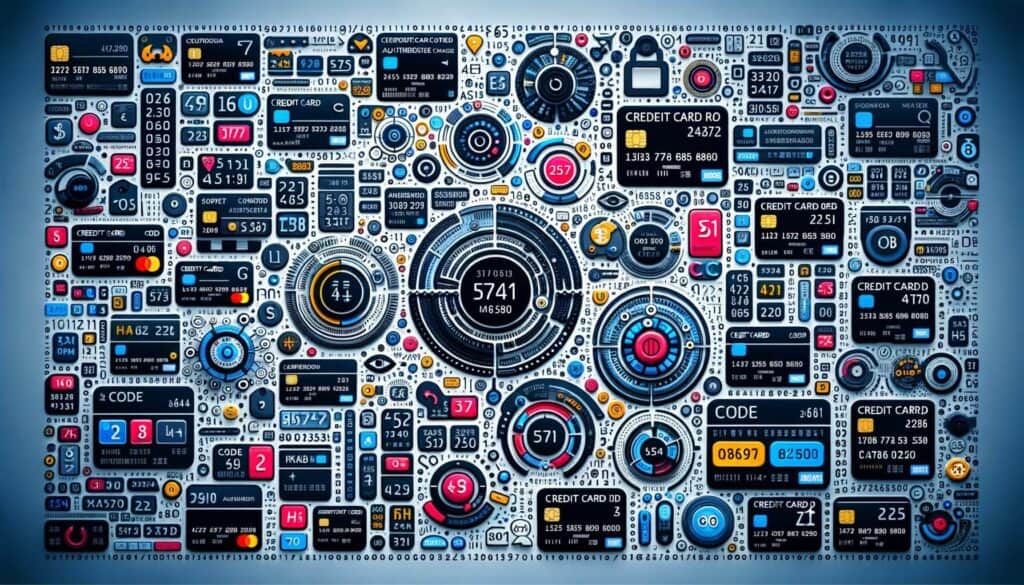
By Mollie Mills April 26, 2025
Credit card authorization codes play a crucial role in the payment process, ensuring that transactions are secure and legitimate. These codes are generated by the issuing bank and provide merchants with the necessary information to complete a transaction. Understanding how credit card authorization codes work is essential for both merchants and consumers, as it helps prevent fraud and ensures a smooth payment experience.
In this comprehensive guide, we will delve into the world of credit card authorization codes, exploring their basics, generation process, types, and meaning. We will also discuss the factors that affect credit card authorization approval and provide troubleshooting tips for common authorization code issues. Additionally, we will address frequently asked questions to clarify any doubts or misconceptions surrounding credit card authorization codes.
Understanding the Basics of Credit Card Authorization

Before diving into the intricacies of credit card authorization codes, it is important to grasp the basics of credit card authorization. When a customer makes a purchase using a credit card, the merchant sends a request to the issuing bank to verify the card’s validity and the availability of funds. This process is known as authorization.
During authorization, the issuing bank reviews various factors, such as the cardholder’s credit limit, account status, and transaction history, to determine whether the transaction should be approved or declined. If the bank approves the transaction, it generates an authorization code, which is then transmitted back to the merchant.
The Role of Authorization Codes in the Payment Process

Authorization codes serve as a crucial link between the merchant, the issuing bank, and the payment processor. They provide essential information that allows the merchant to complete the transaction and receive payment. Without a valid authorization code, the merchant cannot proceed with the transaction, as it indicates that the issuing bank has not approved the purchase.
Furthermore, authorization codes help prevent fraud by ensuring that only legitimate transactions are processed. By verifying the cardholder’s information and the availability of funds, authorization codes act as a security measure, protecting both the merchant and the cardholder from unauthorized transactions.
How Authorization Codes are Generated

Authorization codes are generated by the issuing bank in response to a merchant’s authorization request. The process of generating an authorization code involves several steps, including verification, validation, and encryption.
When a merchant sends an authorization request to the issuing bank, the bank’s system reviews the cardholder’s information and checks for any red flags or suspicious activity. If the cardholder’s information is valid and the funds are available, the bank generates a unique authorization code, which is then encrypted and transmitted back to the merchant.
The encryption process ensures that the authorization code remains secure and cannot be easily intercepted or tampered with. This adds an extra layer of protection to the transaction, safeguarding sensitive information from potential hackers or fraudsters.
Common Types of Credit Card Authorization Codes

Credit card authorization codes can vary depending on the issuing bank and the type of transaction. While there are numerous authorization code formats, some of the most common ones include:
1. Approved (00): This authorization code indicates that the transaction has been approved by the issuing bank. It signifies that the cardholder’s information is valid, and the funds are available for the purchase.
2. Declined (05): A declined authorization code means that the issuing bank has rejected the transaction. This could be due to insufficient funds, an expired card, or suspicious activity on the account.
3. Call Issuer (01): When a merchant receives a “Call Issuer” authorization code, it means that the issuing bank requires additional verification or information before approving the transaction. The merchant should contact the bank’s authorization center to proceed with the purchase.
4. Invalid Merchant (14): An authorization code of “Invalid Merchant” suggests that the merchant’s account is not authorized to accept credit card payments. This could be due to a technical issue, a violation of the bank’s terms and conditions, or an expired merchant account.
5. Pick Up Card (04): If a merchant receives a “Pick Up Card” authorization code, it means that the issuing bank has flagged the card as lost, stolen, or compromised. The merchant should retain the card and contact the bank for further instructions.
Decoding the Meaning of Authorization Code Responses
Understanding the meaning behind authorization code responses is crucial for both merchants and consumers. These responses provide valuable information about the status of a transaction and help identify any issues or errors that need to be addressed.
Here are some common authorization code responses and their meanings:
1. Approved (00): This response indicates that the transaction has been successfully authorized by the issuing bank. The merchant can proceed with completing the purchase and receiving payment.
2. Declined (05): A declined response means that the issuing bank has rejected the transaction. The merchant should inform the customer that the payment was not approved and explore alternative payment options.
3. Call Issuer (01): When a merchant receives a “Call Issuer” response, it means that the issuing bank requires additional verification or information. The merchant should contact the bank’s authorization center to resolve the issue.
4. Invalid Merchant (14): An “Invalid Merchant” response suggests that the merchant’s account is not authorized to accept credit card payments. The merchant should contact their payment processor or bank to rectify the issue.
5. Pick Up Card (04): If a merchant receives a “Pick Up Card” response, it means that the issuing bank has flagged the card as lost, stolen, or compromised. The merchant should retain the card and follow the bank’s instructions for further action.
Factors Affecting Credit Card Authorization Approval
Several factors can influence the approval or decline of a credit card authorization. Understanding these factors can help merchants optimize their payment processes and minimize the risk of declined transactions.
1. Available Credit Limit: The cardholder’s available credit limit plays a significant role in authorization approval. If the transaction amount exceeds the available credit, the authorization is likely to be declined.
2. Account Status: The status of the cardholder’s account, such as active, closed, or suspended, can impact authorization approval. Closed or suspended accounts are more likely to result in declined transactions.
3. Transaction History: The cardholder’s transaction history, including previous purchases and payment patterns, can influence authorization approval. Unusual or suspicious activity may trigger a decline.
4. Card Expiration: If a card has expired, the authorization request is likely to be declined. It is essential for merchants to verify the card’s expiration date before processing a transaction.
5. Security Measures: Some issuing banks employ additional security measures, such as two-factor authentication or address verification, to prevent fraud. Failure to pass these security checks may result in a declined authorization.
Troubleshooting Authorization Code Issues
Despite taking precautions, merchants may encounter authorization code issues that require troubleshooting. Here are some common issues and their potential solutions:
1. Declined Transactions: If a transaction is declined, the merchant should inform the customer and explore alternative payment options. It is advisable to double-check the card information, verify the available credit, and contact the issuing bank for further clarification.
2. Call Issuer Requests: When a merchant receives a “Call Issuer” authorization code, they should contact the bank’s authorization center for additional information. The bank may require further verification or may provide instructions to resolve the issue.
3. Invalid Merchant Errors: If a merchant receives an “Invalid Merchant” authorization code, they should contact their payment processor or bank to rectify the issue. This could involve updating account information, renewing licenses, or resolving technical problems.
4. Pick Up Card Situations: When a merchant receives a “Pick Up Card” authorization code, they should retain the card and follow the issuing bank’s instructions. This may involve contacting the bank’s authorization center or reporting the card as lost or stolen.
Frequently Asked Questions about Credit Card Authorization Codes
Q1. What is a credit card authorization code?
Answer: A credit card authorization code is a unique code generated by the issuing bank in response to a merchant’s authorization request. It indicates whether a transaction has been approved or declined.
Q2. How long is a credit card authorization code valid?
Answer: The validity of a credit card authorization code varies depending on the issuing bank. In most cases, authorization codes are valid for a limited period, typically between 7 to 30 days.
Q3. Can an authorization code be used multiple times?
Answer: No, an authorization code can only be used once. Once a transaction is completed using an authorization code, it cannot be reused for subsequent purchases.
Q4. Can an authorization code guarantee payment?
Answer: While an authorization code indicates that a transaction has been approved, it does not guarantee payment. The final payment is subject to the cardholder’s available credit, account status, and other factors.
Q5. What should I do if I receive a declined authorization code?
Answer: If you receive a declined authorization code, you should inform the customer and explore alternative payment options. It is advisable to double-check the card information, verify the available credit, and contact the issuing bank for further clarification.
Conclusion
Credit card authorization codes are an integral part of the payment process, ensuring secure and legitimate transactions. By understanding the basics of credit card authorization, the role of authorization codes, and how they are generated, merchants and consumers can navigate the payment landscape with confidence.
Decoding the meaning of authorization code responses and troubleshooting common issues can help merchants optimize their payment processes and minimize the risk of declined transactions. By staying informed and proactive, merchants can provide a seamless payment experience for their customers while safeguarding against fraud.
Frequently asked questions provide clarity on common concerns surrounding credit card authorization codes, empowering both merchants and consumers to make informed decisions and resolve any issues that may arise.
In conclusion, credit card authorization codes are a vital component of the payment ecosystem, ensuring security, legitimacy, and a smooth payment experience for all parties involved. By understanding and leveraging the power of authorization codes, merchants can build trust with their customers and facilitate seamless transactions in the digital age.